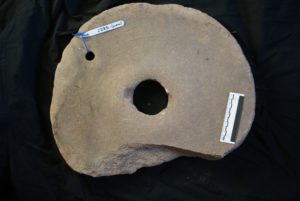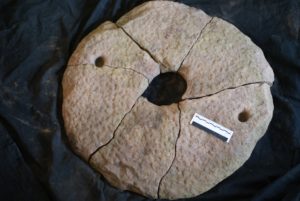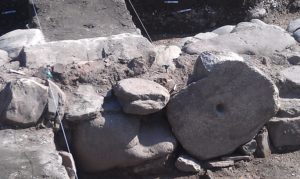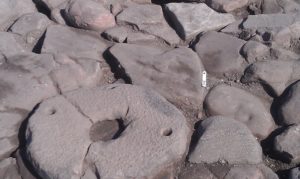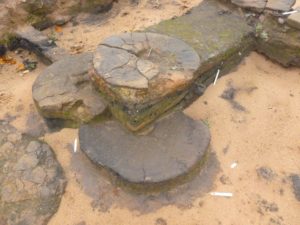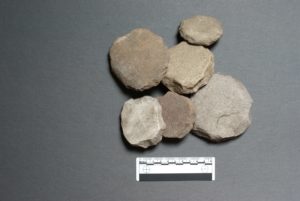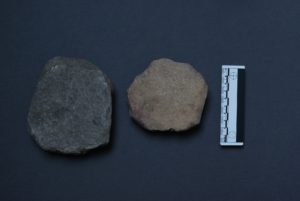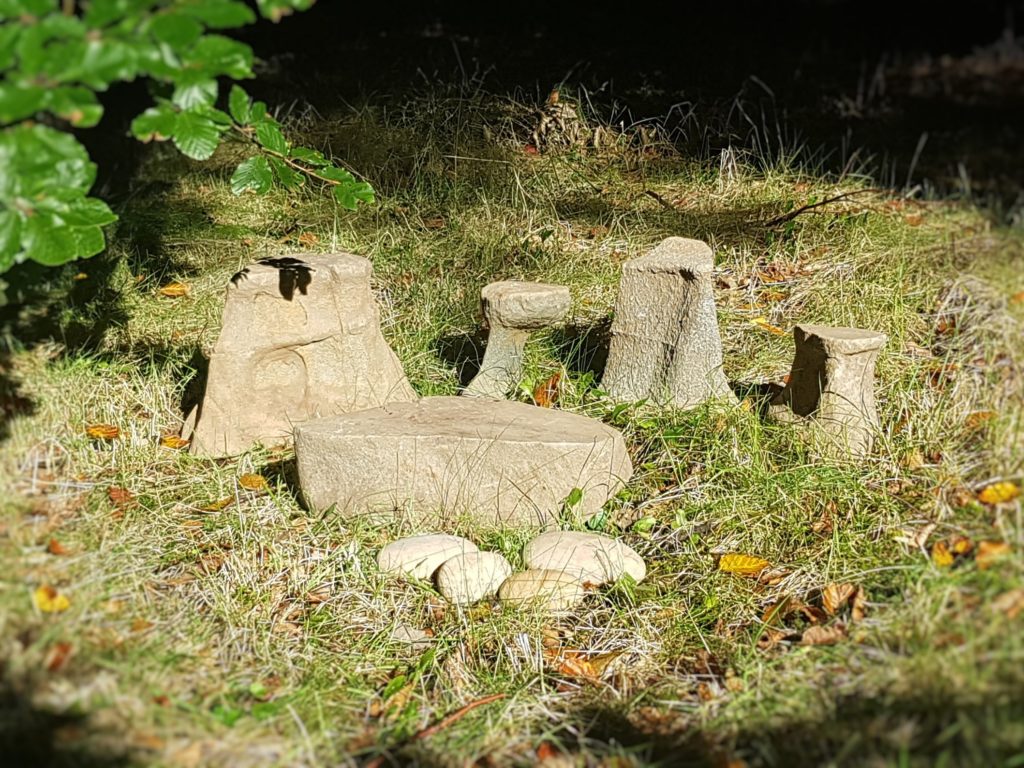
Northlight Heritage have recently excavated a fascinating site by Loch Freuchie, Perth and Kinross. This structure, built around a spring head, housed a group of stone ‘figures’ and a collection of quartz cobbles.
The anthropomorphic figures are intriguing. They are natural waterworn forms, ranging in height from 100mm to 200mm, which have been formed by differential erosion of metamorphic blocks leaving distinctive waisted shapes.
These stones bear close comparison the group of seven stone forms from Tigh na Cailleach, Glen Lyon, Perthshire http://www.stravaiging.com/history/ancient/site/tigh-na-cailleach These are thought to be representative of the figures Cailleach and Boddach from Celtic mythology. At Tigh na Cailleach the ritual of placing the figures in the stone shelter at the beginning of winter and taking them outside every spring is carried on in the present day.
The quartz cobbles are likely to have had deeper meanings associated with their inclusion in the structure built around the spring head – from Medieval times (and probably even earlier) white and clear stones were associated with water and were placed at holy wells. In historical times the curative or magic powers of white stones were effected by dipping them in water and then drinking the liquid. It is possible then that the white cobbles were deliberately placed at the source of this spring to purify or imbue the water with magical or healing properties. An alternative explanation for the light wear traces found on the surface of the small cobbles could link them to the practice of rubbing or striking quartz pebbles together to produce a faint glow called triboluminescence.
This was clearly a site at which ritual took place – at Tigh na Cailleach the timing of the actions appear to be linked to fertility and rebirth. At Loch Freuchie the close association with a spring head is intriguing. Is this a continuation of pre-Christian practices and if so was it a secretive and hidden ritual?
A report of the excavation is being prepared for publication by Northlight Heritage.
Further reading
Gilchrist, R. (2008) Magic for the dead? The archaeology of magic in later medieval burials. Medieval Archaeology, 52, 119-159.
Lebour, N 1914, ‘White quartz pebbles and their archaeological significance’, Trans Dumfriesshire Galloway Natur Hist Antiq Soc 2, 121–34.

